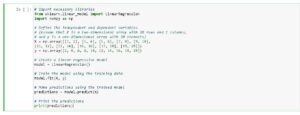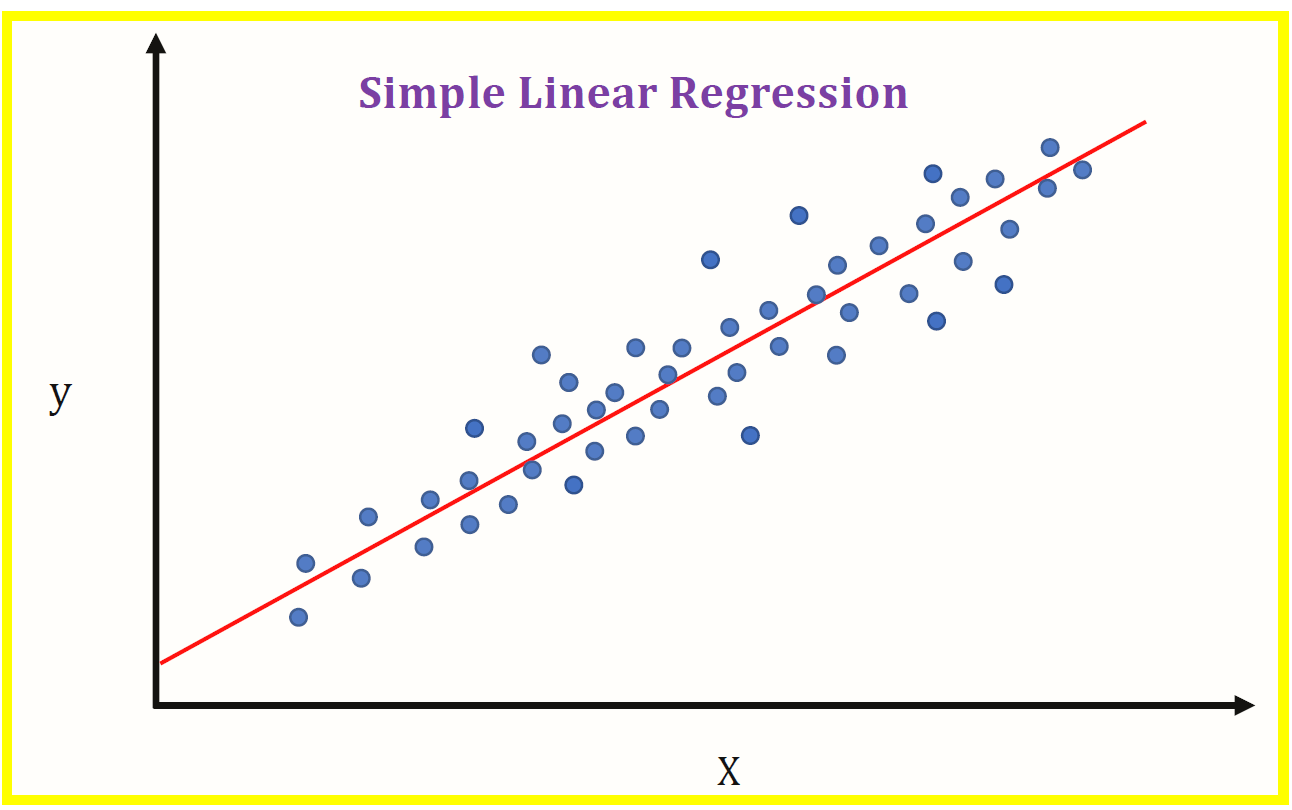
Linear Regression
Linear regression is a statistical technique used to analyze the relationship between two or more variables. It is a type of regression analysis that is used to model the relationship between a dependent variable and one or more independent variables by fitting a linear equation to the observed data.
Linear regression assumes that the relationship between the dependent and independent variables is linear, which means that the change in the dependent variable is proportional to the change in the independent variable. For example, if the dependent variable is the price of a stock and the independent variable is the overall state of the economy, a linear regression model would assume that the change in the stock price is directly proportional to the change in the economy.
To perform linear regression, data is collected for the dependent and independent variables and a mathematical model is used to fit a line to the data. The model is then used to make predictions about the value of the dependent variable based on the values of the independent variables.
Linear regression has several advantages, including its simplicity and the fact that it is easy to interpret. However, it also has some limitations, such as the assumption of linearity and the fact that it is sensitive to outliers in the data.
Overall, linear regression is a useful tool for understanding the relationship between variables and making predictions based on that relationship. It is widely used in many fields, including economics, finance, and the social sciences.
Regression Analysis
Regression analysis is a statistical technique used to analyze the relationship between two or more variables. It is commonly used in data analysis to understand how the value of one variable (the dependent variable) is affected by the value of one or more other variables (the independent variables).
For example, regression analysis could be used to understand how the price of a stock is affected by the overall state of the economy, or how a student’s test scores are affected by the number of hours they study. In each case, the goal of the regression analysis is to build a model that can predict the value of the dependent variable based on the values of the independent variables.
To perform regression analysis, data is collected for the variables of interest and a mathematical model is used to fit a line (or curve) to the data. The model is then used to make predictions about the value of the dependent variable based on the values of the independent variables.
There are many different types of regression analysis, including linear regression, logistic regression, and polynomial regression. The appropriate type of regression to use depends on the nature of the data and the research question being studied.
Regression analysis is a powerful tool for understanding the relationship between variables and making predictions based on that relationship. It is widely used in many fields, including economics, finance, and the social sciences.
Sample Python Code For Linear Regression:
Here is sample code in Python for implementing linear regression using the scikit-learn library:
Copy and paste it into your Python editor, such as Jupyter Notebook, PyCharm or VS Code.
# Import necessary libraries
from sklearn.linear_model
import LinearRegression
import numpy as np
# Define the independent and dependent variables
# (Assume that X is a two-dimensional array with 10 rows and 2 columns,
# and y is a one-dimensional array with 10 elements)
X = np.array([[1, 2], [3, 4], [5, 6], [7, 8], [9, 10],
[11, 12], [13, 14], [15, 16], [17, 18], [19, 20]])
y = np.array([2, 4, 6, 8, 10, 12, 14, 16, 18, 20])
# Create a linear regression model
model = LinearRegression()
# Train the model using the training data
model.fit(X, y)
# Make predictions using the trained model
predictions = model.predict(X)
# Print the predictions
print(predictions)
This code will create a linear regression model and use it to make predictions on the training data. The predictions will be printed to the console.
(Click HERE to learn more about the benefits and advantages of hiring an Independent Data Analyst.)
To see more about my skill sets, please visit my Analyst Portfolio Project.

